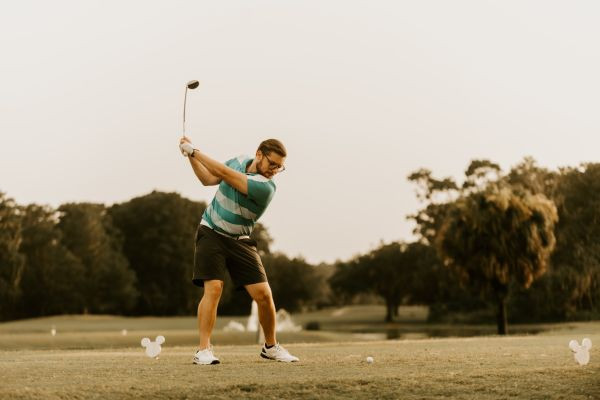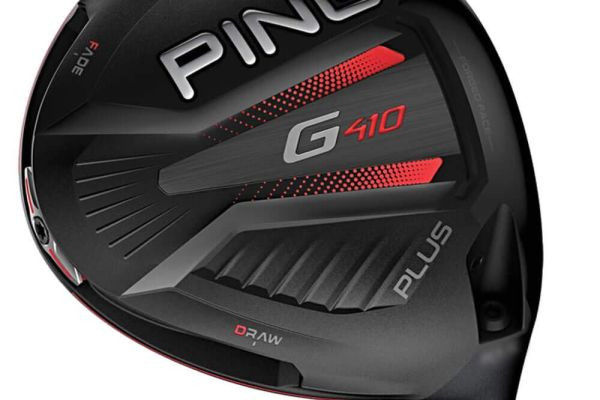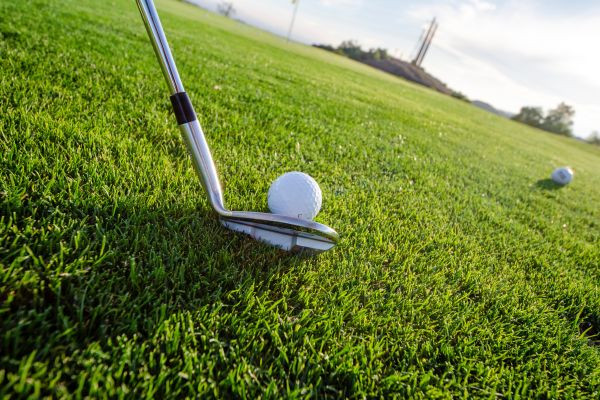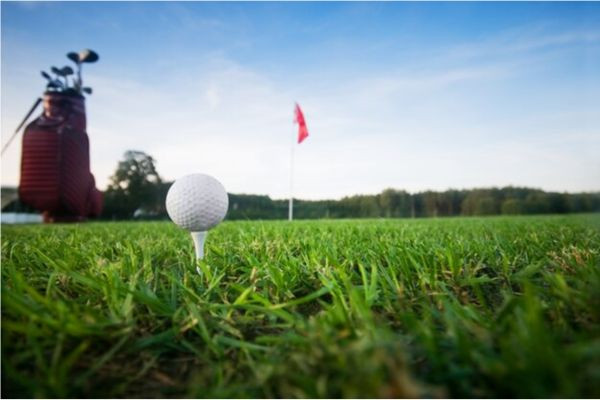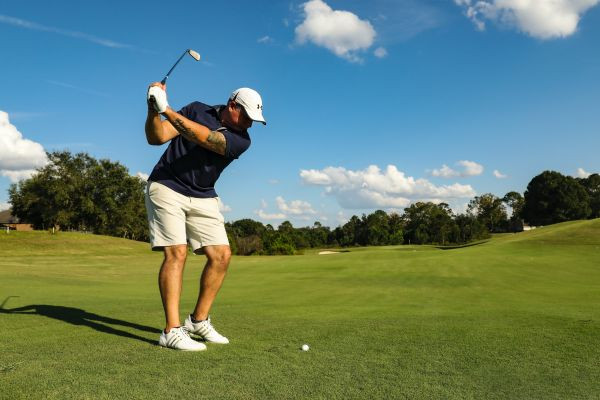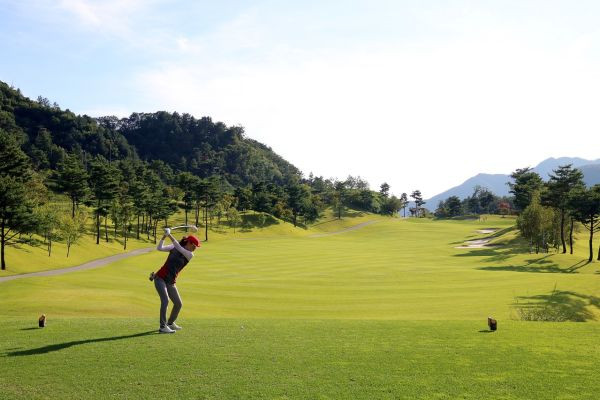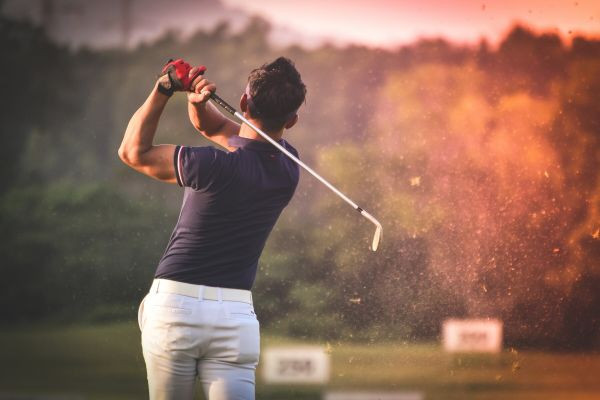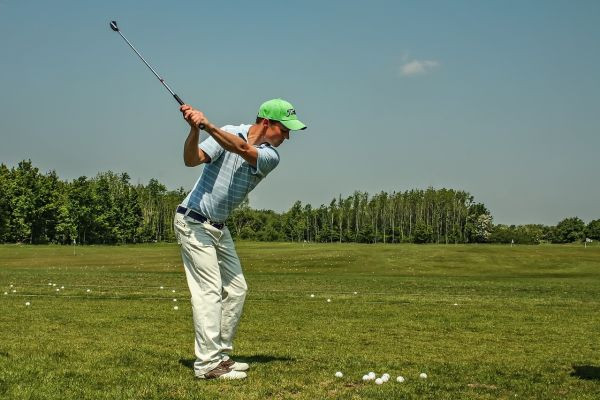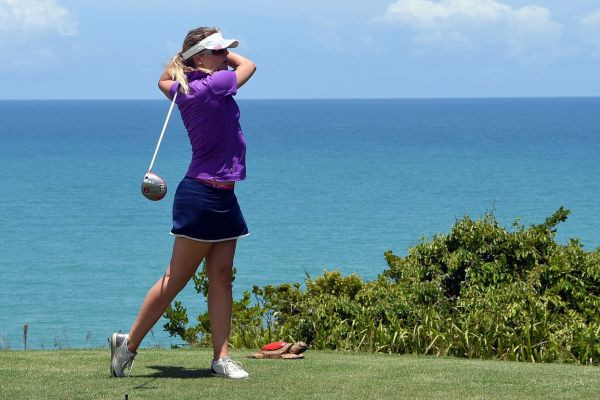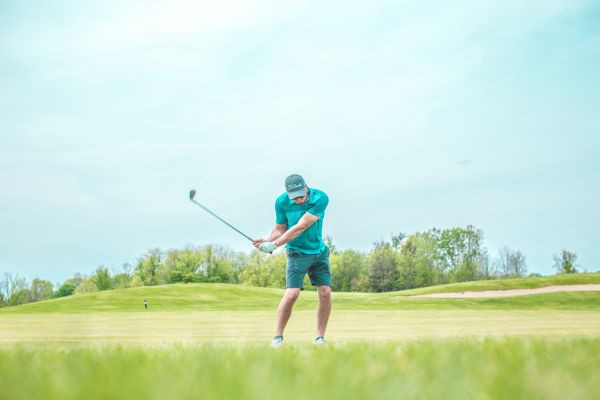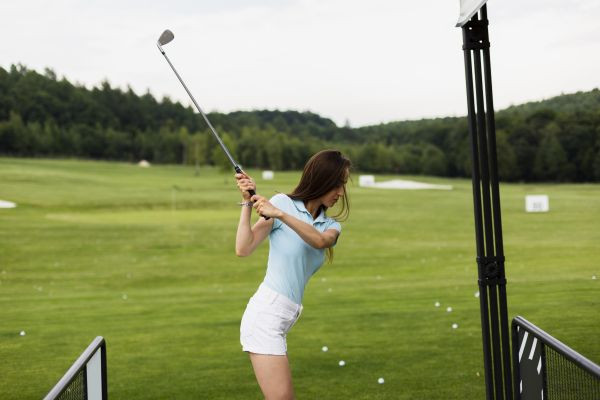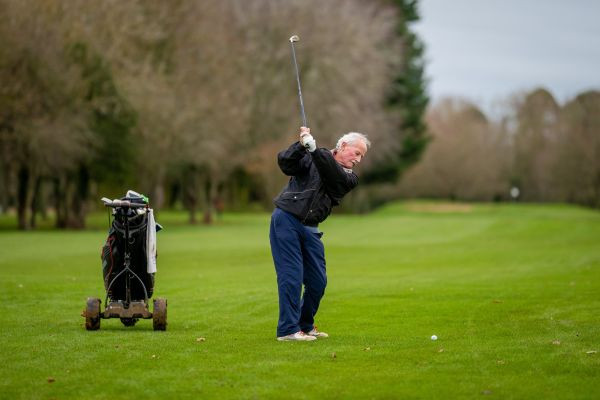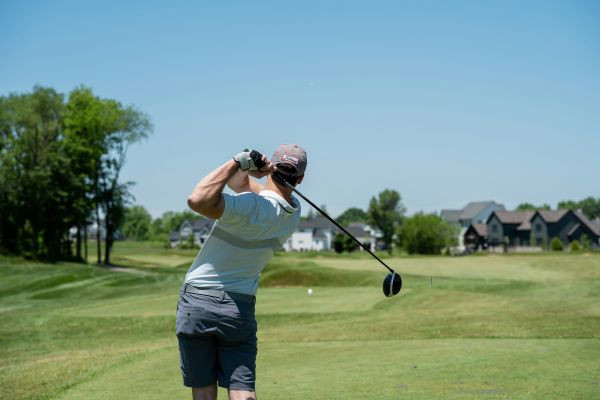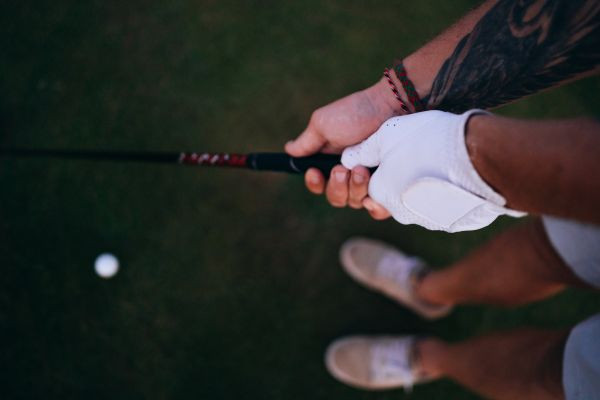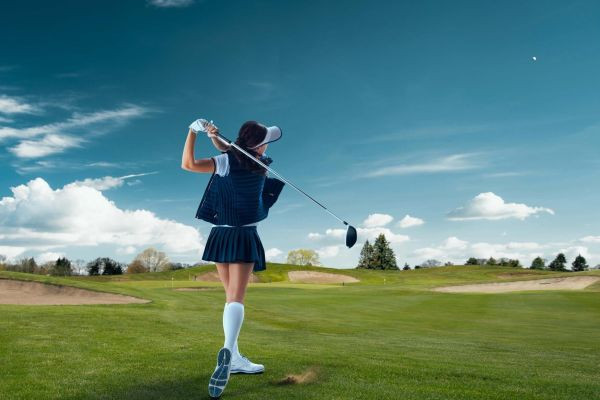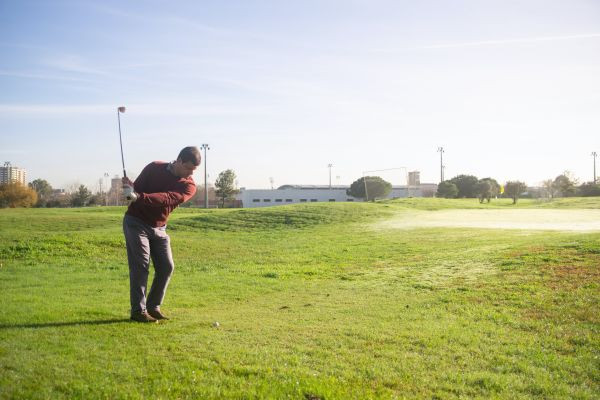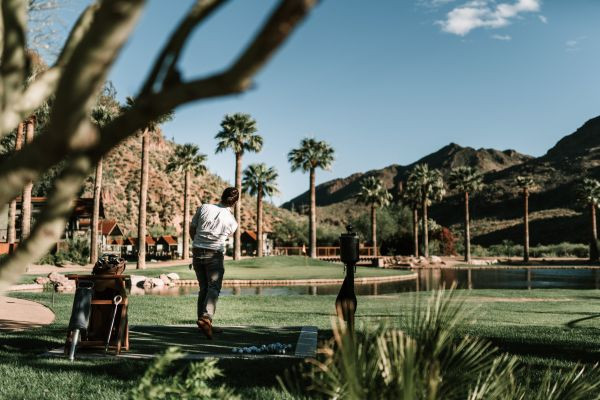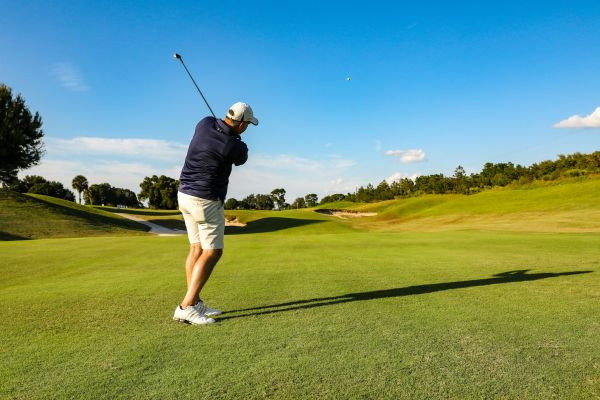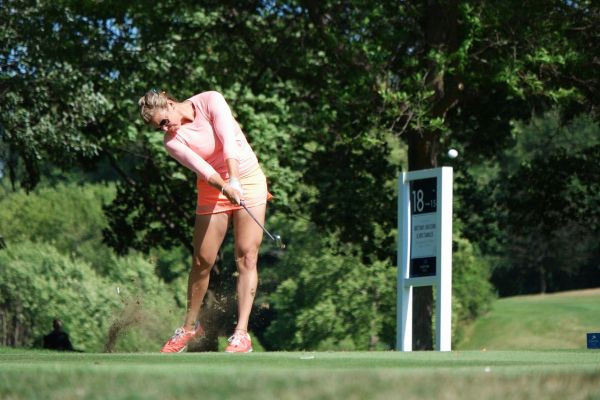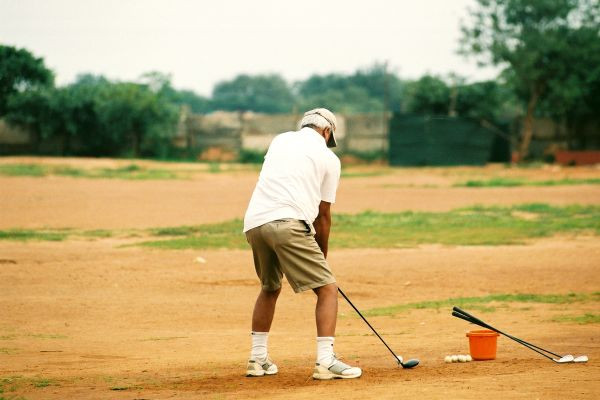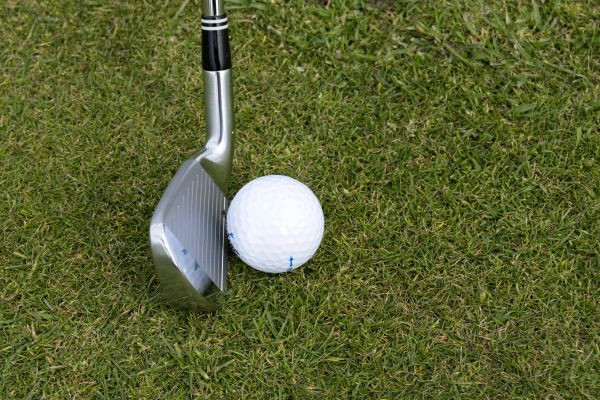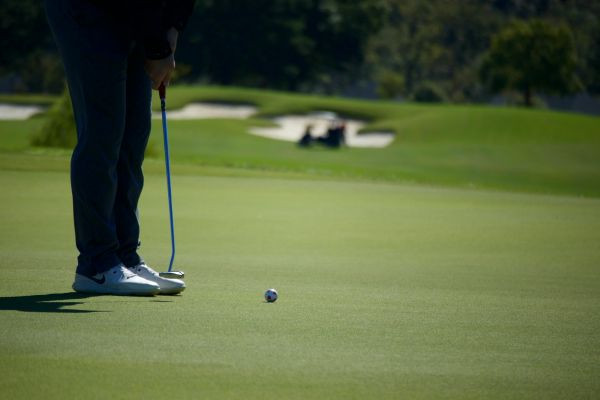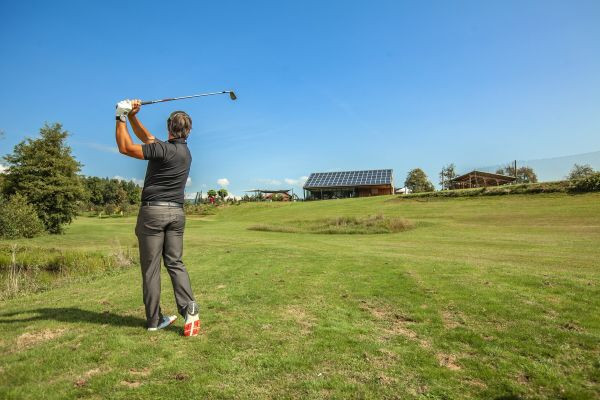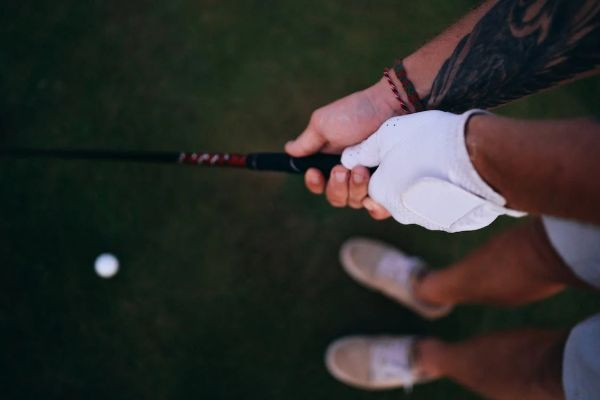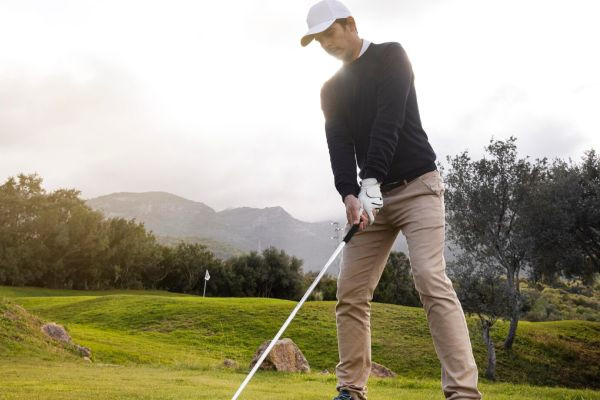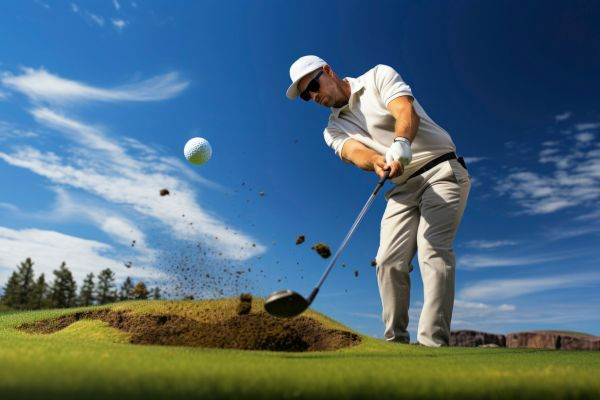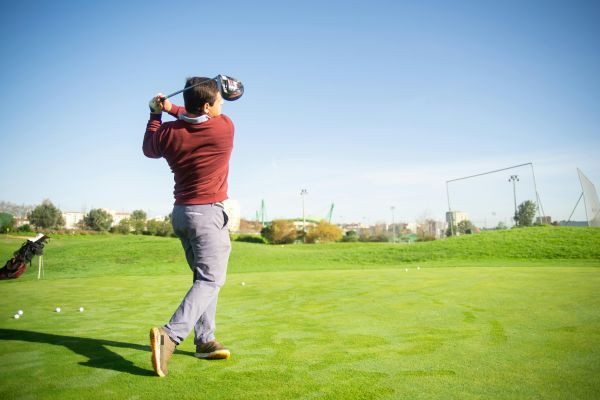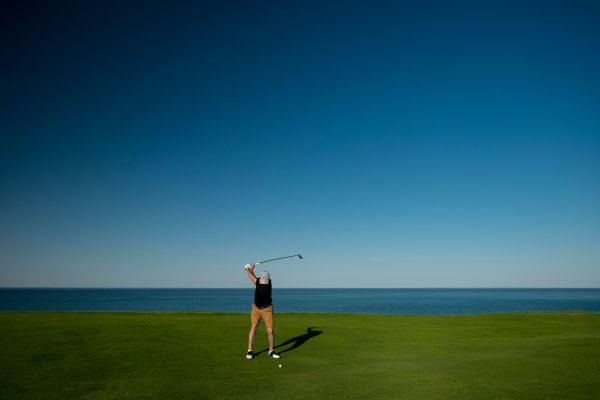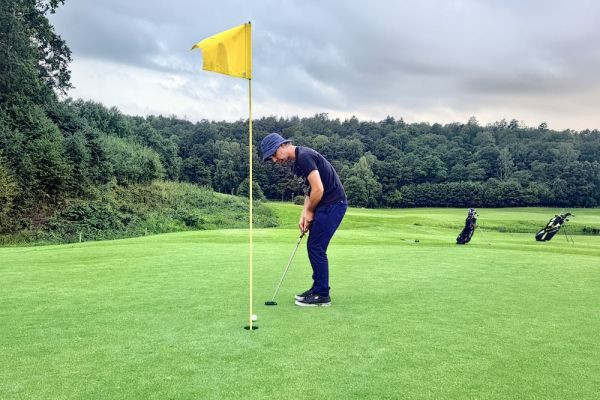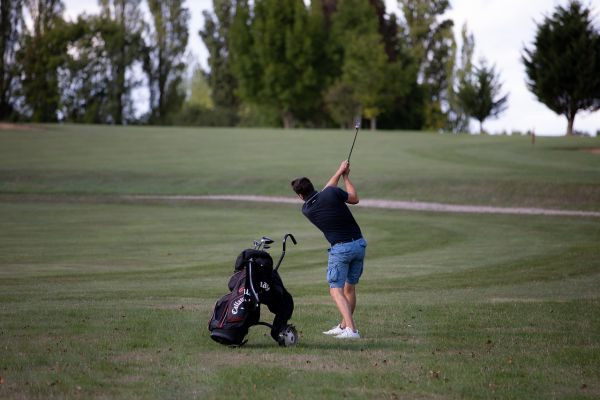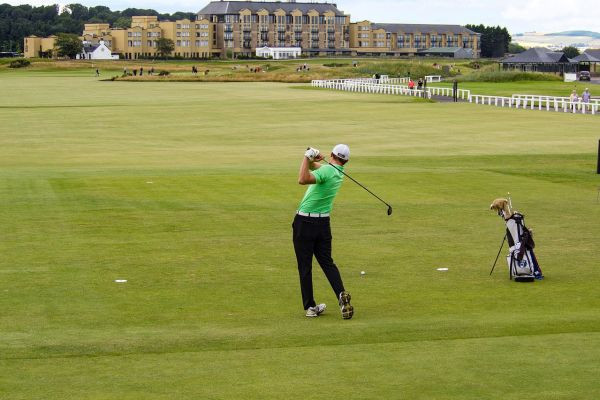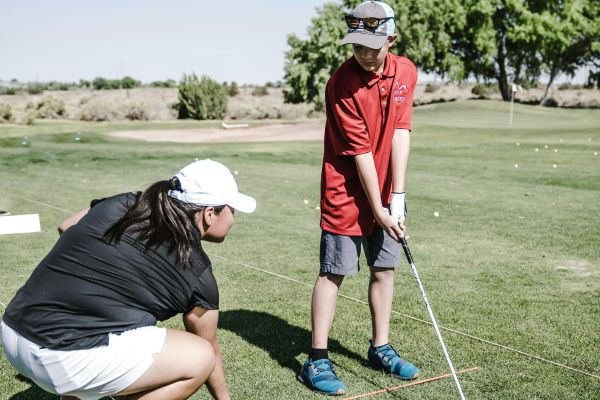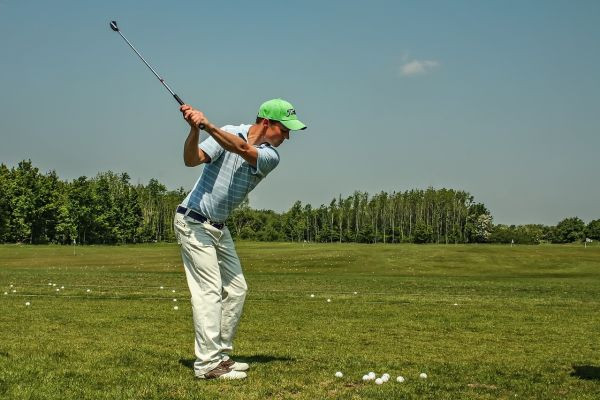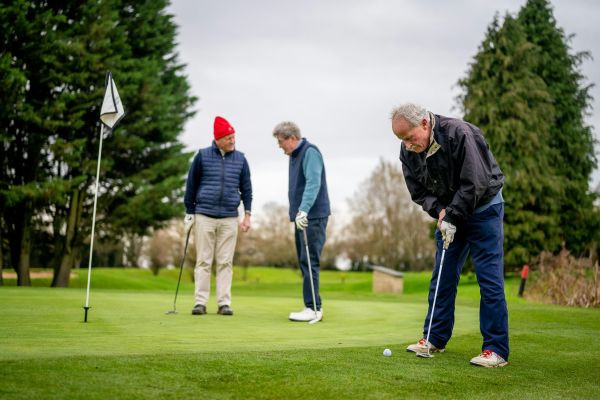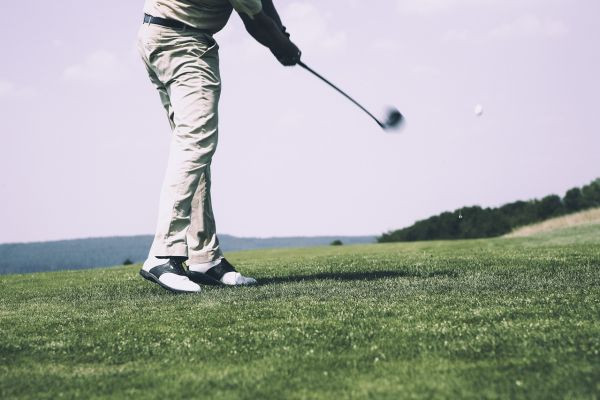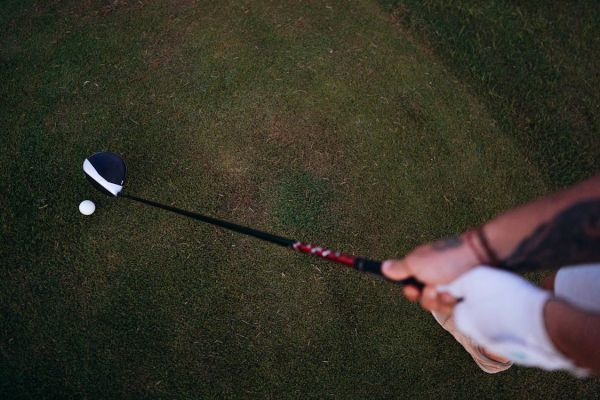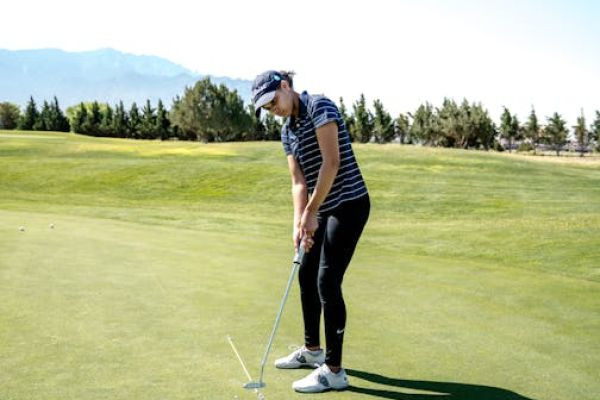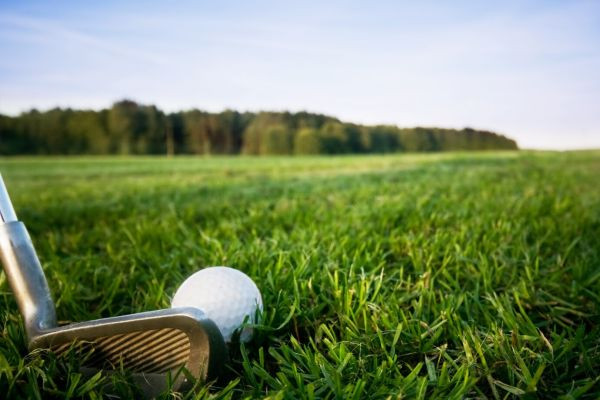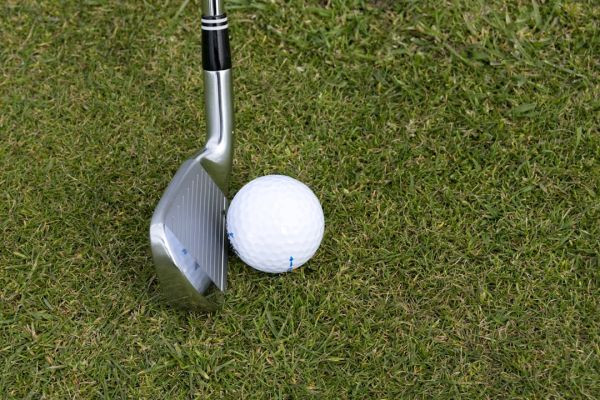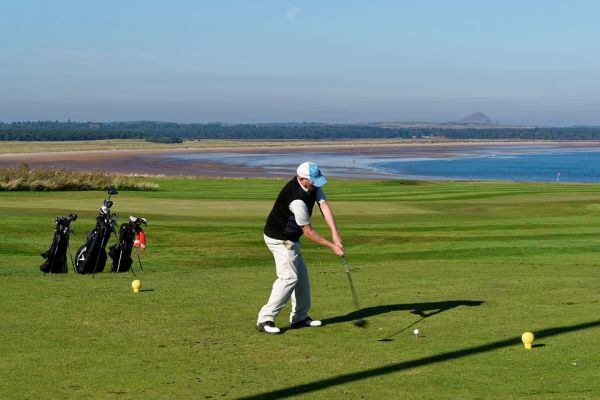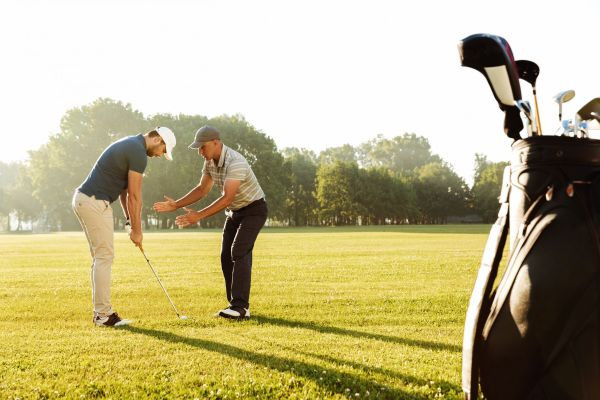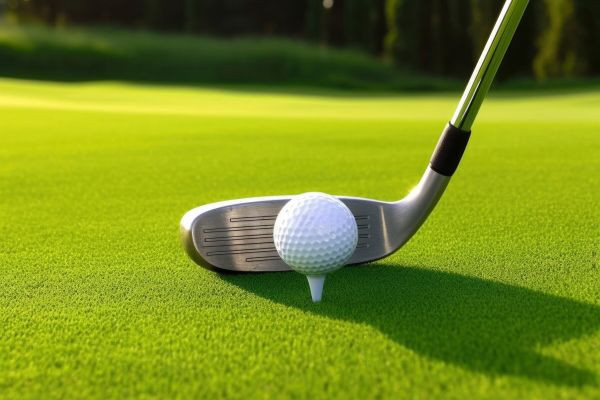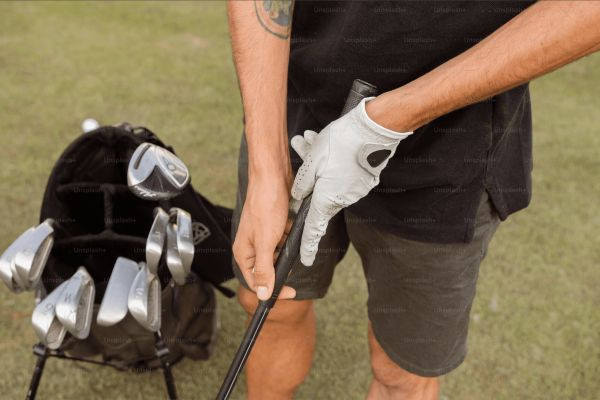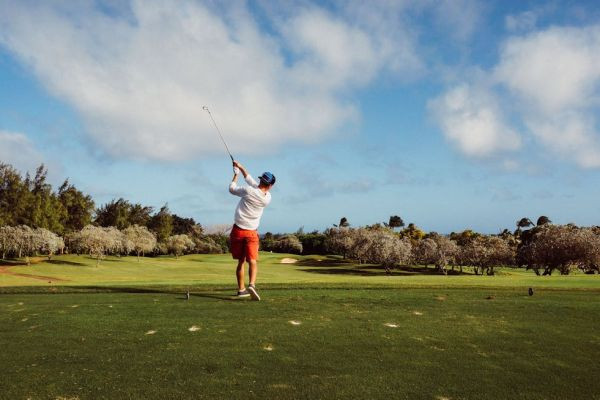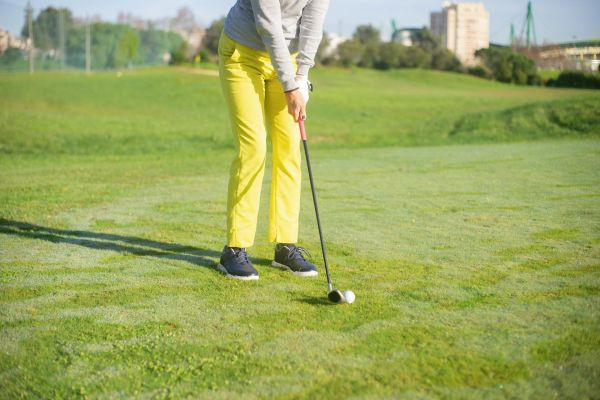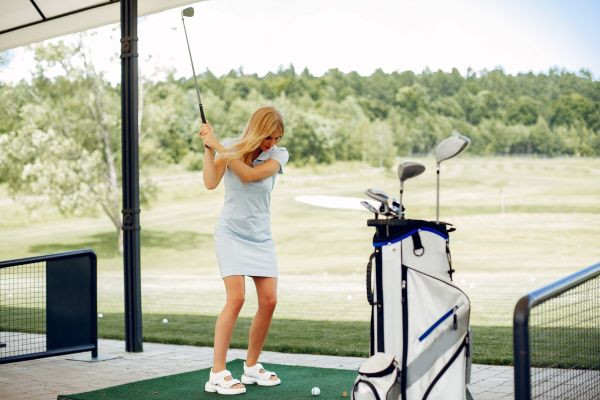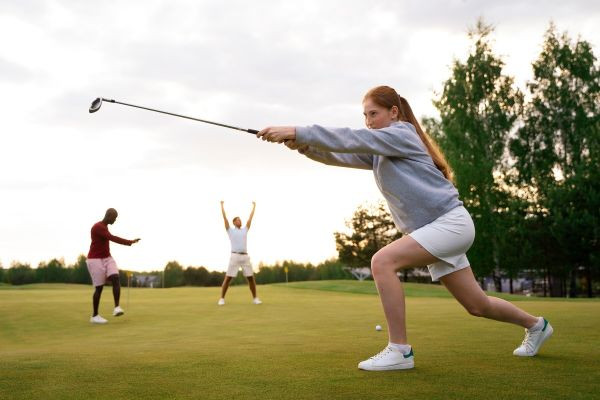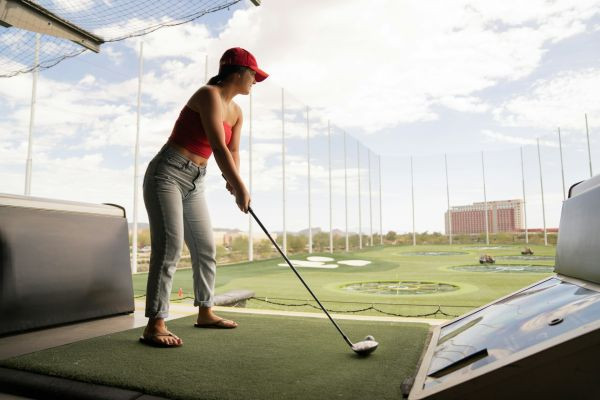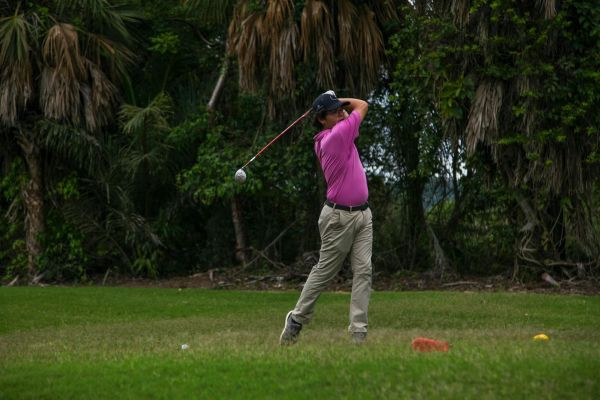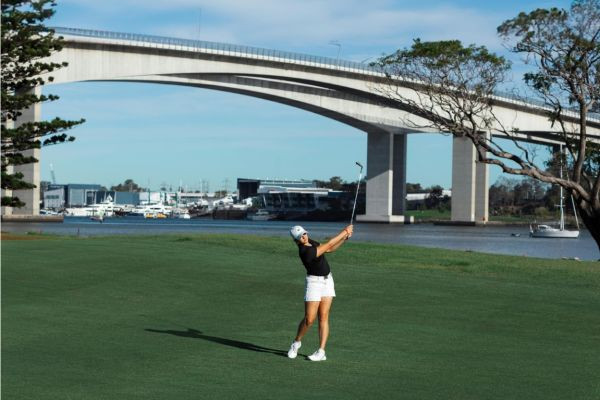How to Execute Backspin with Your Golf Wedge Shots
Perfecting the technique of generating backspin in golf is crucial for any player looking to enhance their command over wedge shots. This guide offers insights into the mechanics and tactics required ..
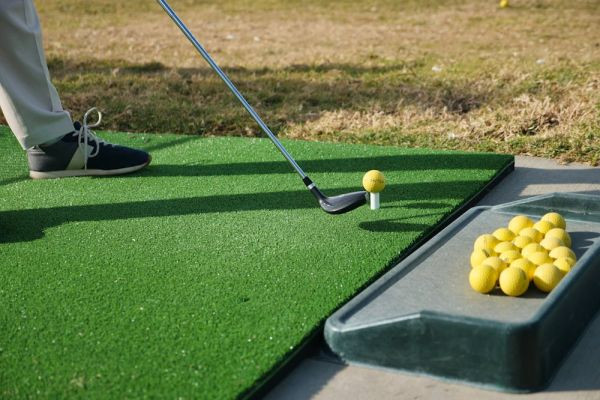
Perfecting the technique of generating backspin in golf is crucial for any player looking to enhance their command over wedge shots. This guide offers insights into the mechanics and tactics required to achieve backspin ensuring that your shots not only land softly but also come to a swift stop on the putting greens improving your accuracy and performance in short range play.
Understanding Backspin
What is Backspin?
Backspin refers to the spin of a golf ball as it travels through the air after being struck by a club. This spin impacts the ball's trajectory enabling it to fly and land gently compared to shots with minimal or no spin. The true magic of backspin becomes evident when the ball makes contact with the green; it significantly decelerates, halts abruptly or even rolls back towards the golfer therefore offering precision and positioning for shots.
Physics Behind Backspin
The generation of backspin fundamentally involves the interaction between the golf ball and the clubface, at the instant of impact. Achieving backspin relies on a combination of elements coming together harmoniously:
Clubhead Speed: Generating a swing speed enhances the potential for increased backspin by leveraging the clubs striking velocity to apply rotational force.
Clean Contact Point: It is crucial for the ball to be struck cleanly by the clubface, free of any debris or impediments such as grass or moisture as these factors can notably lessen the spin's effectiveness.
Optimal Angle of Attack: Ensuring that the club makes contact with the ball at the right angle—not too shallow nor too steep—is crucial. This Enables the grooves on the clubface to effectively 'grab' onto the ball and create the desired backward rotation.
Equipment Check
Choosing the Right Wedge
Choosing the right wedge is crucial in helping you put backspin on the ball. It's good to choose wedges that are specifically designed to give you backspin. These wedges have grooves that are really sharp; they're milled on the face, both of which help you get the traction you need when the club face meets the ball as you drive through impact.
So it's no wonder that the experts say you can get the most backspin from the highest-lofted wedges, the 56° sand wedge and the 60° lob wedge. The way the highest loft wedges are made makes it possible to hit down on the ball with a very steep angle.
Selecting the Best Golf Balls for Backspin
As important as choosing the right wedge is, choosing the right golf ball is equally critical. Golf balls such as the famous Titleist ProV1 are renowned for their ability to increase backspin. They're made with a soft urethane cover and are specifically designed for deeper and more effective interaction with a wedge's grooves, allowing more gripping and increased backspin.
By combining a multi-part internal structure with this shell, the integrity of the ball is supported which keeps the performance top-notch throughout the game, allowing each shot to be as seamless as possible.
The Setup
Stance
When setting up to hit, ensure that you are in the best position to generate spin. To do so, align yourself in a slightly open stance by aligning your feet, hips, shoulders to be slightly to the left of your target (for right-handed golfers). This less direct stance will help you attack the ball steeper, which will be necessary to achieve a downward strike and backspin. It is crucial to approach the ball from the inside gently, ensuring that the club does not get too far inside the ball on the target side of the line.
Ball Positioning
Ball placement in your stance is crucial for creating backspin. Place the ball slightly back of your center, around your sternum. This will encourage the club to hit the ball first, rather than striking the ground. Clean contact with the ball is the genesis of optimal backspin. Incredible compression is a big contributing factor in creating spin. Thus, hitting the ball first allows less grass to interfere with the impact, hence maximizing the spin on the ball directly.
Weight Distribution
Having the right weight distribution is crucial, for a shot. Its recommended to shift 60% of your weight towards the target when setting up. This frontward bias in weight helps with hitting the ball downwards, which is essential for creating the desired backspin effect. The key is to maintain this weight distribution throughout your swing to ensure solid contact with the ball.
Executing the Shot
Swing Mechanics
The way you swing your club plays a role in producing backspin. Concentrate on executing a controlled backswing that stays aligned with your aiming line. When transitioning to the downswing make it sharp and forceful. Generating speed through impact is crucial; a clubhead speed at contact enhances the chances of creating backspin. Keeping up the acceleration through impact maximizes the force on the ball.
Impact Dynamics
During impact several factors contribute to achieving backspin. Firstly make sure that your clubface strikes the ball before hitting the ground to prevent any power or spin loss due to friction, with the turf.
To create backspin it's important to decrease the angle of the clubface at impact so that it hits the ball with less loft than usual. This helps grip the ball against the turf and adds backspin.
Follow-Through
When it comes to generating backspin your follow through is just as crucial as the rest of your swing. It's essential to maintain your swing's momentum after impact and keep up the speed throughout your swing arc. Slowing down before or at impact can greatly reduce spin. This can affect the ball's trajectory and final position. Make sure your follow through is consistent with the rest of your swing to maximize backspin and control over your shot.
Technical Tips for Improved Backspin
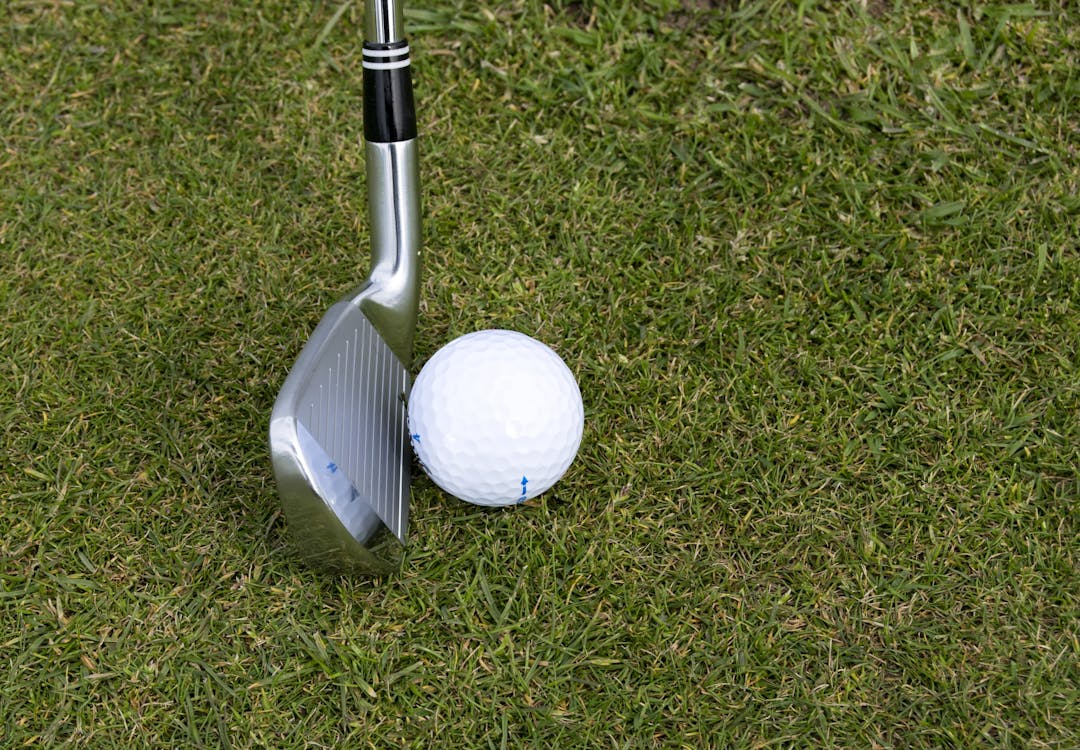
Source:https://www.pexels.com/photo/silver-wedge-golf-club-beside-ball-274133/
Clubhead Speed
Improving clubhead speed isn't about swinging, it's also about swinging smarter. Effective clubhead speed plays a role in creating spin. The faster the club makes contact, with the ball the spin you're likely to generate.
To enhance your speed concentrate on practice swings that highlight not velocity but also precision. The coordination and timing of your swing play a role in ensuring that maximum speed is achieved at the moment of impact. Engaging in drills that emphasize accelerating the downswing while maintaining equilibrium and flow can enhance your capacity to generate both speed and spin.
Hitting Down on the Ball
To produce that desired backspin it's vital to make contact with the ball using a strike. This entails having the clubhead moving downward when it meets the ball. By striking down on the ball you establish an impact compressing the ball against both the clubface and turf thus optimizing its spin potential.
For practicing hitting down on the ball, focus on drills that promote an attack angle. A useful drill involves placing a towel behind the ball and hitting shots without displacing it. This exercise helps reinforce the sensation of making contact with the ball before hitting the ground.
Ensuring Clean Contact
The connection between the clubface and the golf ball plays a role in not achieving distance but also controlling the spin of the ball. Any foreign particles like grass, moisture or dirt on the clubface can hinder the grooves ability to grip the ball effectively leading to a decrease in spin.
To ensure a clean impact it is essential to clean your clubface before each shot. Keep a towel or brush handy in your bag. Make it a habit to wipe down the club's face before setting up for your shot. Furthermore, paying attention to keeping the golf ball clean can also influence its spin. A quick check and cleaning routine can greatly impact how your shots perform.
Common Mistakes to Avoid
Scooping
One mistake that golfers often make is trying to scoop up the ball with a swing. This method typically reduces backspin as it raises the loft at impact of compressing the ball properly. To generate backspin effectively it is crucial to focus on striking down into the ball. This approach helps create the compression and friction needed for backspin.
Decelerating
Slowing down the clubhead as you approach hitting the ball is a mistake that can mess up your backspin. This slowdown can lead to a lack of the contact necessary to create spin. It's crucial to keep a speed throughout your swing especially when you make contact with the ball. Practicing with the goal of increasing speed through impact can help fix this problem.
Poor Club Maintenance
The state of your club can also affect how much backspin you can generate. Dull grooves and dirty clubfaces significantly reduce the clubs ability to hold onto the ball and produce spin. It's important to inspect and clean your wedges to ensure they are in condition for spinning the ball.
Advanced Techniques
Adjusting the Loft
Adjusting the angle can be a strategy for managing backspin. When setting up try experimenting with altering the angle to discover the point for maximum spin. This may involve tightening or loosening your grip, which will change how much loft is presented at impact. Finding this point can greatly improve your control over backspin.
Playing with Different Lies
The positioning of the golf ball plays a role in determining the amount of backspin you can apply to it. It's helpful to practice hitting shots from lies to observe how the ball's placement—whether it's on the fairway, rough or sand—affects the spin. Learning how to adapt your technique and swing in scenarios can result in improved mastery, over controlling the spin of the ball.
Practice Drills
Drill 1: Half-Swing Shots
Improving your capacity to create solid and regular ball contact is critical to achieving spin. The half-swing plays a vital role in fulfilling this demand. It permits your concentration to focus on the mechanics of the stroke without the capacity of great speed and motion, which a complete stroke has.
Half-swings are a great way to improve your ball striking by developing the correct angle and force necessary for backspin.
Drill 2: The Divot Pattern Practice
To measure whether you're producing enough backspin, look back or the divot after the ball. You should be taking crisp, clean divots, meaning the angle with which you're presenting the club to the ball at impact is steep and there should be a deep and narrow cut taken from the ground that is about four inches in length.
The drill emphasizes the need to hit the ball while the clubhead is moving down—which is an essential component of creating backspin. By brushing the turf right where the ball was or just slightly after it, you're demonstrating that you're hitting the ball first and then taking a divot. That's always ideal for producing backspin.
Drill 3: Target Practice
Arranging targets at various distances provides an optimal methodology for honing your backspin manipulation under diverse environments. By focusing on precise targets, you can calibrate your swing, posture equipment choices to observe firsthand the impact of these variables on the ball's behavior.
Perfecting the technical aspects of creating backspin not only improves this skill. It also does a lot to help to control your distance and to bolster your accuracy – two critical shots for better play and great fun on the golf course!
Golf Wedge Maintenance
To ensure that the wedges give you optimal performance on the golf course, you have to keep the grooves clean. Cleaning the grooves to be exact plays a significant role. The grooves are the friction and grip between your club and the golf ball. Friction and grip are vital when trying to create backspin. Dirty grooves negatively affect the amount of friction from the golf club to the golf ball, cutting down on both control and spin. The grooves get dirty from dirt, grass debris during play.
Regular recurring maintenance of cleaning out the grooves with a specialized groove cleaner or stiff brush is essential to keep the grooves in tip-top condition. Regular inspections of your wedges are essential to keep them in good working order. You could be losing control and spin out of your wedges without even knowing it while playing golf.
Over time, the grooves start to wear out and become smooth, resulting in the grooves not doing what they were designed to do. If the grooves on your wedges are starting to look shallow or worn down, it is time to start thinking about replacing your wedges. Once the grooves are gone, you can't replace them, you can't play golf at a level you were once used to.
Conclusion
As mentioned, learning how to apply backspin to your wedge shots in golf is no easy task. It requires the proper equipment, lots of practice and a meticulous eye for detail. Hopefully the tips and maintenance advice I have listed above will help you to better stop your golf balls quickly on the greens, which will in turn boost your overall short game while out on the course.
Frequently Asked Questions (FAQs)
How often should I clean my golf wedge?
Cleaning your golf wedge after each round or practice session is necessary. It is vital to keep the grooves clean so the golf club is effective at putting spin and control on the golf ball. This is the difference between a good and a great shot.
What is the best golf ball for backspin?
Golfers in search of the best backspin on their shots generally find balls with softer covers, like urethane, most effective. A classic example, the Titleist Pro V1, typically has few drawbacks, often providing users with both short-game spin control and long-term resilience.
How can I tell if my wedges need replacing?
If you see that the grooves in your wedge look rough or worn or if you notice diminished control or spin, it may be time for a fresh set of grooves. A new wedge with new grooves will help you generate much more backspin, beautify your control over it thus your short shots.
Can backspin help with longer irons?
Yes, having backspin can be helpful with longer irons as it helps the ball to climb quickly and land softly; thereby, giving the golfer more control once they reach the green. In order to master backspin with longer irons, it takes practice and properly executing the swing mechanics.
What is the ideal clubhead speed for generating backspin?
Unfortunately, there simply isn't a one-size-fits-all answer because the optimal clubhead speed for generating backspin varies depending on both the club and the golfer's technique. In general, a higher clubhead speed in combination with proper impact dynamics will create greater degrees of backspin.
How do different weather conditions affect backspin?
Moist conditions reduce backspin as moisture between the ball and clubface lessens the capability of friction. Dry and warm conditions amplify backspin. Windy conditions also dictate the backspin of balls; a headwind can create more spin, whereas a tailwind can lessen the spin of a shot.

